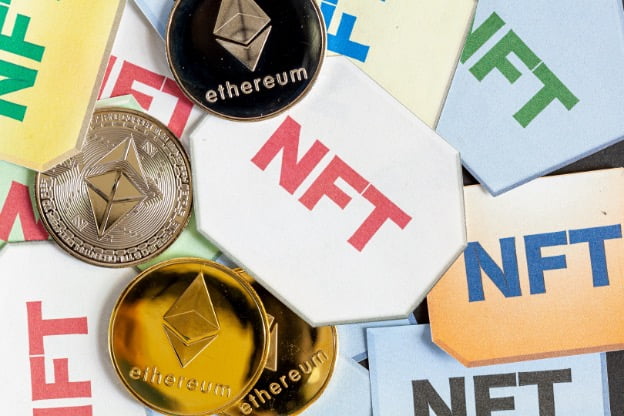Let’s face it: the world of digital collectibles is one that many of us have only recently become aware of. In fact, it’s still so new that there are very few people who even understand what it is or why they might want to acquire non-fungible tokens (NFTs).
If you’re already familiar with some of the basic concepts behind NFTs and want to jump straight to the information about their relation to other cryptocurrency market assets, we’ll give you a quick rundown on that as well.
What are Non-Fungible Tokens (NFTs)?
Non-fungible tokens (NFTs) are unique digital assets that can’t be substituted or replaced by other tokens. This means they’re not interchangeable, so you can’t just give someone your NFT and expect them to accept it.
NFTs can be:
- owned by an individual or a company
- used as a currency on another blockchain
- bought and sold in secondary markets
- used as collectibles
It also means that each NFT is divisible into smaller units, but not fungible with other tokens. If you own one ounce of gold, it doesn’t matter if the next person’s piece weighs slightly more or less than yours; both are still worth the same amount because they have equal value as a whole unit.
Finally, unlike fungible currencies such as USD or EURO which can be easily divided into smaller units (cents), making them easier for transactions involving small amounts; non-fungible tokens cannot be broken down into smaller parts because their utility lies within their individual uniqueness – like owning a rare painting or collectible card game card.
How do NFTs work?
NFTs are a digital representation of a physical asset.
NFTs are non-fungible because they are unique and cannot be exchanged for another NFT. This means that when you buy an NFT, you own it forever–you can’t trade it or sell it again (unless the creator decides to allow it).
Non-fungible tokens work a bit like collectibles, with each one being unique. In some cases, these unique tokens are tied to something that can be distinguished and verified, such as access to an off-chain digital file or a particular URL on the web. In other cases, they are tied to things that can’t be distinguished and verified in the physical world, such as the digital representation of exclusive ownership over a name or a word in a game.
Uses of NFT
NFTs enable its users to create unique, digital assets which are probably rare and which can be transferred on a blockchain. That means the users can take any type of digital asset like a token, a badge or a piece of artwork and turn it into something that can be owned and traded by anyone, securely and transparently, without the need for a third-party authentication.
An owner of an NFT could use it as a way to prove ownership of another asset. For example, say you own several unique collectible items that you want to keep track of using blockchain technology. You could create an NFT for each item and then store them in a digital wallet that applies different attributes to each token depending on what it represents. This system makes it easier to keep track of your inventory and proves ownership without requiring you to take physical possession of the underlying asset.
NFTs have been used to verify authenticity in the art world since the 1990s. Each token is generated by an artist and contains information about the name of the piece, its creation date, and a cryptographic hash that identifies its owner. This way, each token is unique and can be traced back to its original owner.
When it comes to art, provenance serves as an important factor when valuing a piece of art, in order to ensure that the painting has not been stolen or improperly acquired. The use of NFTs in this case improves upon the current system by providing proof that the painting you see online or in person has changed hands from one owner to another over time.
How are NFTs different from cryptocurrency?

The first and most obvious difference between NFTs and cryptocurrencies is that NFTs don’t have a price. This is a result of their fundamental differences in design and purpose. Cryptocurrencies are designed to be alternative stores of value for money, operating as a medium of exchange for goods, services, or other currencies, thus, the price, including BLUR price, is always changing.
NFTs represent a token of ownership over a digital object, or a license to use an object. They are non-fungible because each one is unique and has its own attributes and history. Cryptocurrency, on the other hand, represents money: fungible tokens that can be transferred from person to person.
NFTs are a digital asset that is unique. Cryptocurrency, on the other hand, is fungible. This means that all units of cryptocurrency, including Bitcoin, Ethereum, and trading pairs such as VRA USDT can be easily exchanged for one another.
NFTs are different from cryptocurrency as well because they do not have intrinsic value: for example, NFTs like Cryptokitties don’t even have any real-world use outside of the game. Each Cryptokitty is worth only what people will pay for it; more to the point, even if someone does want to buy your Cryptokitty in the marketplace, there’s no guarantee that their offer will be accepted on any given day.
Cryptocurrency has intrinsic value because each unit is backed by a set amount of gold or other physical resources—for example, dollars and euros are backed by the respective countries’ economies. Most cryptocurrencies also have real-world applications: people use them as payment processors, facilitators of international commerce (because they can escape banking fees), and as investment vehicles (like stocks).
Reasons For Owning NFTs
Empowers Artists
To begin with, NFTs empower artists by allowing them to create unique digital works from scratch. It’s so much more than that though. Artists can now actually own their creations and have true ownership over their intellectual property. Say you’re an artist who has made an incredible piece of art.
With NFTs, you can now assign this art to the Ethereum Blockchain and use this as the very first step in creating your own crypto collectibles or digital art pieces. You could sell it or give it away as a digital gift to someone else who appreciates your work or would like to own it themselves.
Collectibility
NFTs are collectible and unique. In the world of NFTs, each token is unique, which means that you can own one or more copies of it. NFTs also have limited editions, so if you’re looking for a specific token and there are only 20 left in circulation, then this makes it even more valuable than average NFT tokens–especially if its rarity makes it hard to come by.
Finally, because every NFT is trackable on an Ethereum blockchain ledger, you’ll always know exactly how many copies exist at any given time as well as where they came from and where they’ve been since they were created.
Investment
NFTs are a great investment opportunity. They can be traded for other cryptocurrencies, sold for fiat currency and even sold for other NFTs.
If you’re looking to get into the crypto space but don’t want to worry about storing your coins or tokens on exchanges, NFTs might be what you need. They don’t require any technical knowledge or advanced skills; all it takes is a wallet address and some money.
Community
NFTs are a great way to connect with other people. If you’re looking to meet new people, or just want to express yourself, NFTs can be used as a way to show your support for a cause and show appreciation for someone. For example, if someone makes an amazing drawing of your favorite character in their favorite color, then they could sell that on the blockchain as an NFT. In turn, this might inspire other artists who love that same character or color scheme too.
Author

Immersive tech enthusiast, diving into the NFT currents reshaping the Metaverse.





